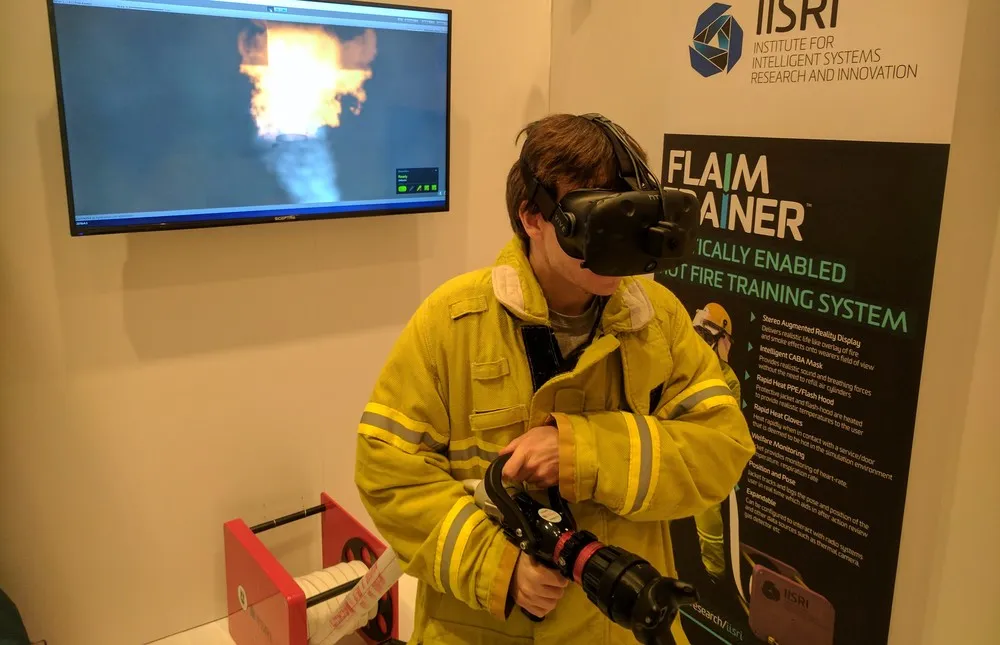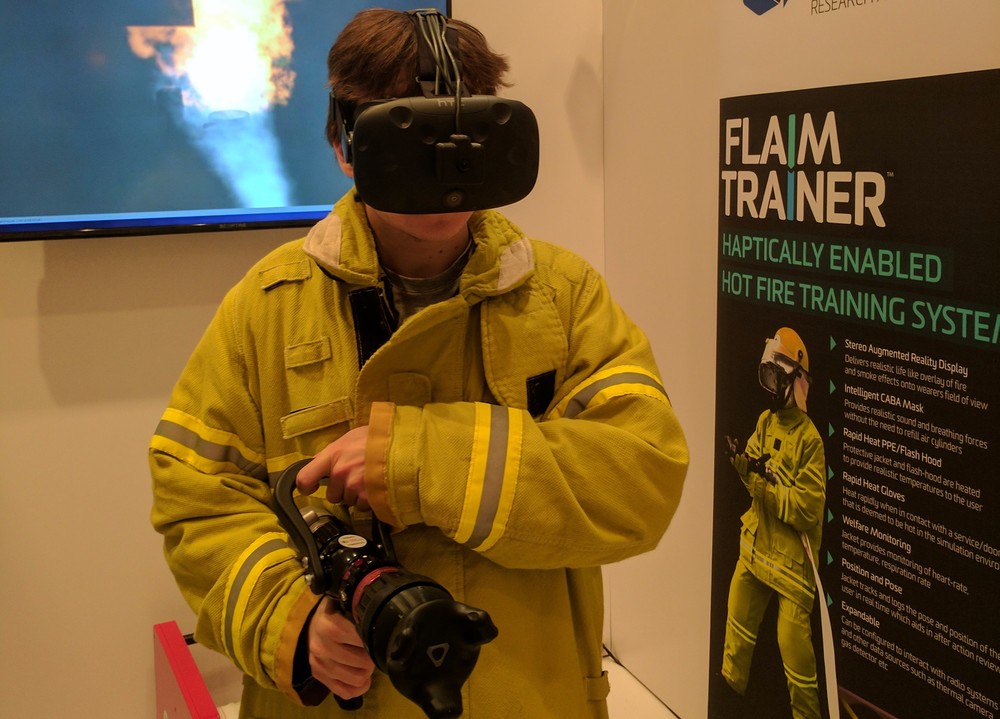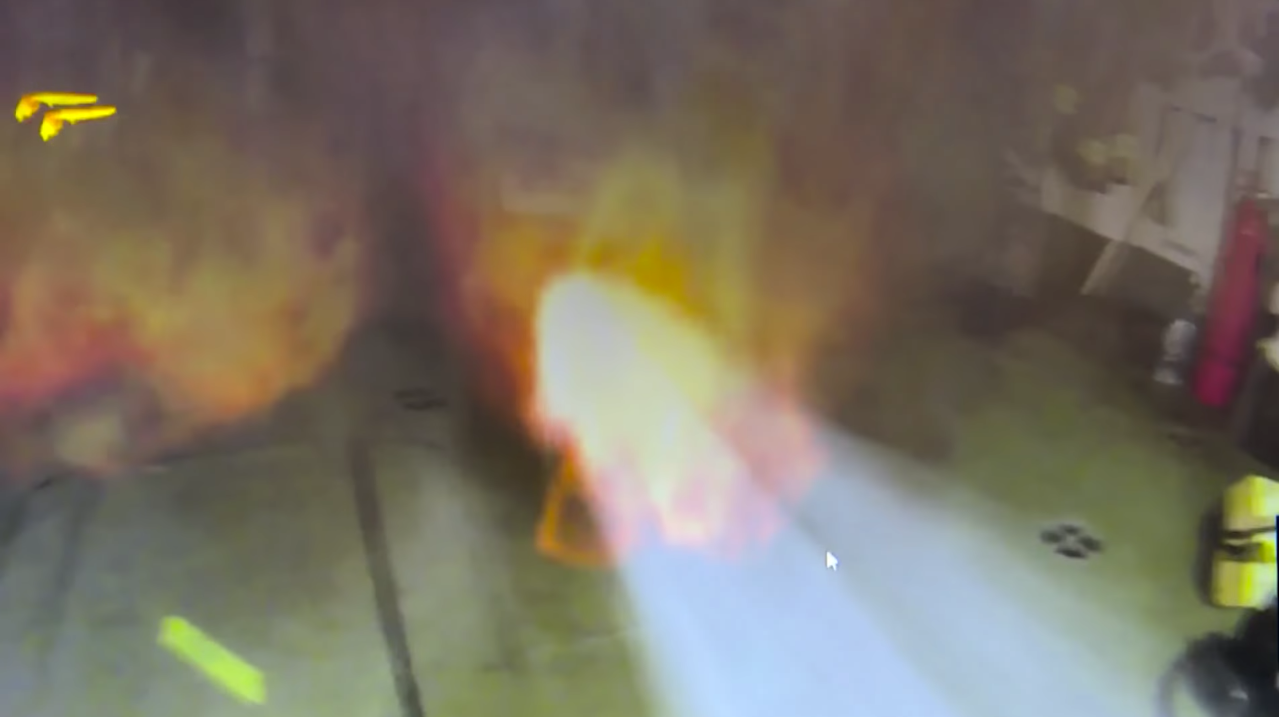It’s been a pretty cold CES. The industry has been hurriedly hopping on one foot to another as they wait outside for Ubers and taxis to get to their next appointment, and heat lamps have had queues of people lining up to feel their flames. If you really wanted to stay warm, though, all you had to do was visit the HTC Vive booth.
Flaim Trainer was one of the several demos HTC was showing off with its new tracker this week. Rather than attaching the new kit to a smartphone or baseball bat, the Institute for Intelligent Systems Research And Innovation (IISRI) from the University of Deakin in Australia attached it to a fire hose. The implication is immediately obvious; what if you could train the next generation of fire fighters across the world with experiences that are expensive and often impossible to replicate in real life?
To do that, you need something more than just a VR headset. You need to be able to replicate the flames of the heat and give trainees an experience that they could mistake for real life, triggering and testing the kind of impulses they’ll need when on the job. To achieve this, the team has created a fireman’s jacket that heats up as you get closer to the flames. For obvious reasons it doesn’t quite scorch your skin, but after five minutes it certainly had me sweating.
In VR, I had a kitchen fire in front of me. When I pulled on the lever for the hose, it would pull back to create a realistic sense of water pressure that I had to lean into so as to not fall over. I had to really work to get the fire put out, and as the experience progressed smoke began to gather at the top of the room and make it harder and harder to see.
It was a brief demo that showed a lot of potential, and Dr. James Mullins, Senior Research Fellow and volunteer fire fighter explained that the team wants to take it a lot further. “We have a big need, in Australia at least, to learn different techniques for firefighting,” he said. “The idea is we can push out content to fire houses all over the world and get people training in some new and interesting and unique experiences. Some firefighters go their entire career and only go to some jobs one or two times in their lifetime.”
Flaim Trainer could give them experience they might not otherwise get, then. It could also be used to help educate people about fire safety. The demo will also be expanded upon with locomotion so that you can move through an entire house and add new tasks like searching for people trapped in the environment.
“Hopefully within the next three to five months we’ll have this system in a state we can push it out,” Mullins said. “We’re beta testing, we’ve had a lot of fire fighters through, a lot of feedback. It’s all about developing the different scenarios that they want right now.”































